The sea is full of fantastic creatures, and the seahorse, our life form of the week, is one of them.
Seahorses’ unique, efficient anatomy
Seahorses are curious-looking creatures. These fish appear to be made of different animal parts. Think about it: the head of a horse, the tail of a monkey, the trunk or snout of an anteater/elephant, the eyes of a chameleon and the pouch of a kangaroo. All packed into a tiny size. There are about 50 species of seahorses, ranging from 0.7 to 9.8 inches (2 to 35 cm). Seahorses belong to the Syngnathidae family, which includes other unusual fish such as pipefish and seadragons.
The seahorse’s flexible and strong body armor is built for battle. Still, seahorses are slow swimmers, which is why they prefer to hide in places with dense vegetation. They like to stay out of trouble, as there are plenty of strange aquatic beasts that love the taste of a seahorse … Is a predator out there? Take cover!
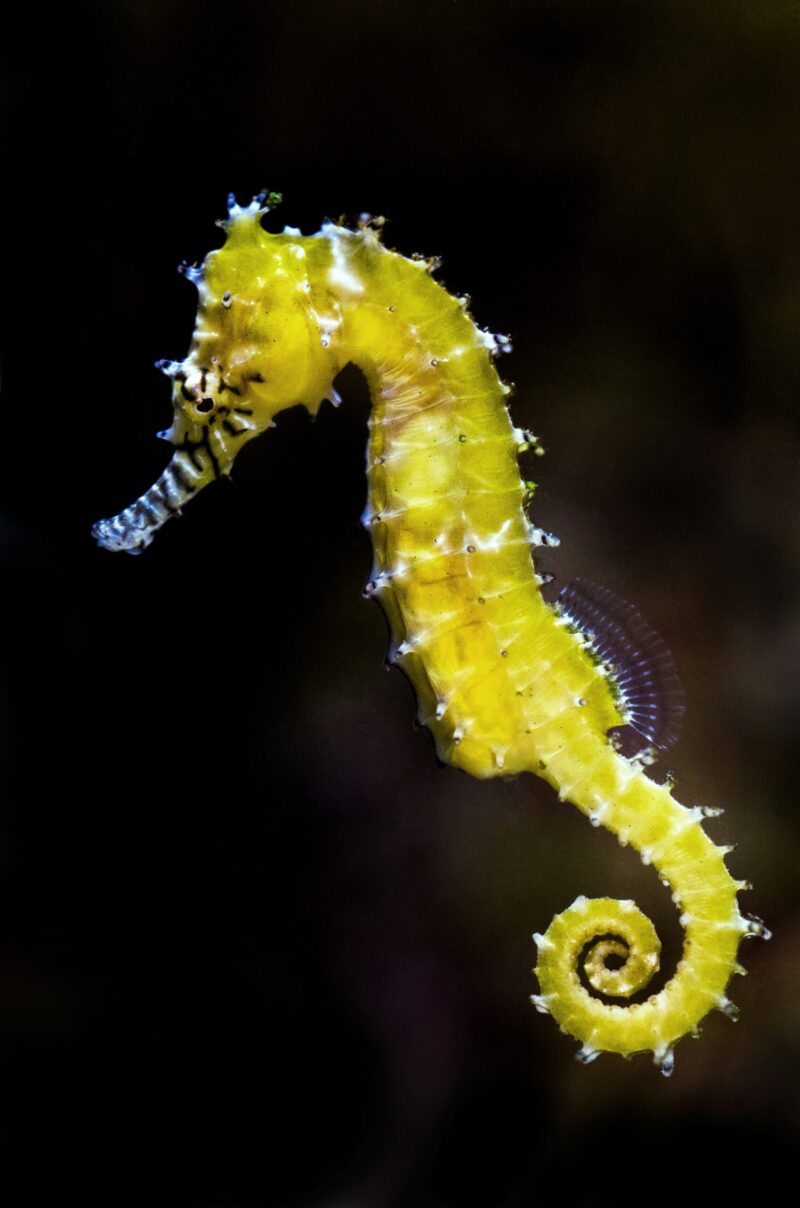
How do seahorses hunt?
But smaller animals need to watch out. The seahorse’s eyes move independently, like the chameleon’s. This way, they can see what’s in front of them and behind them at the same time.
Seahorses live in the tropics and temperate zones, among seagrass beds and coral reefs. They’ll even live in human-made areas such as marinas and harbors. These places are full of tiny shrimp, their favorite food. A seahorse can eat up to 3,000 shrimp in just one day. Because they don’t have stomachs, food passes through their digestive system so rapidly that they must eat almost constantly.
A seahorse’s hunting technique is simple: They sit and wait until a shrimp comes by. The seahorses’ anatomy doesn’t let them swim fast. So, they won’t do much until the prey is right in front of their mouths. Then, they use their toothless trunk/snout to suck up the shrimp like a vacuum cleaner. Their success rate is over 90%. Not bad. That’s 2 to 3 times higher than for other predatory fish. It only takes 5 milliseconds for seahorses to eat their prey. Slow swimmers with fast mouths.
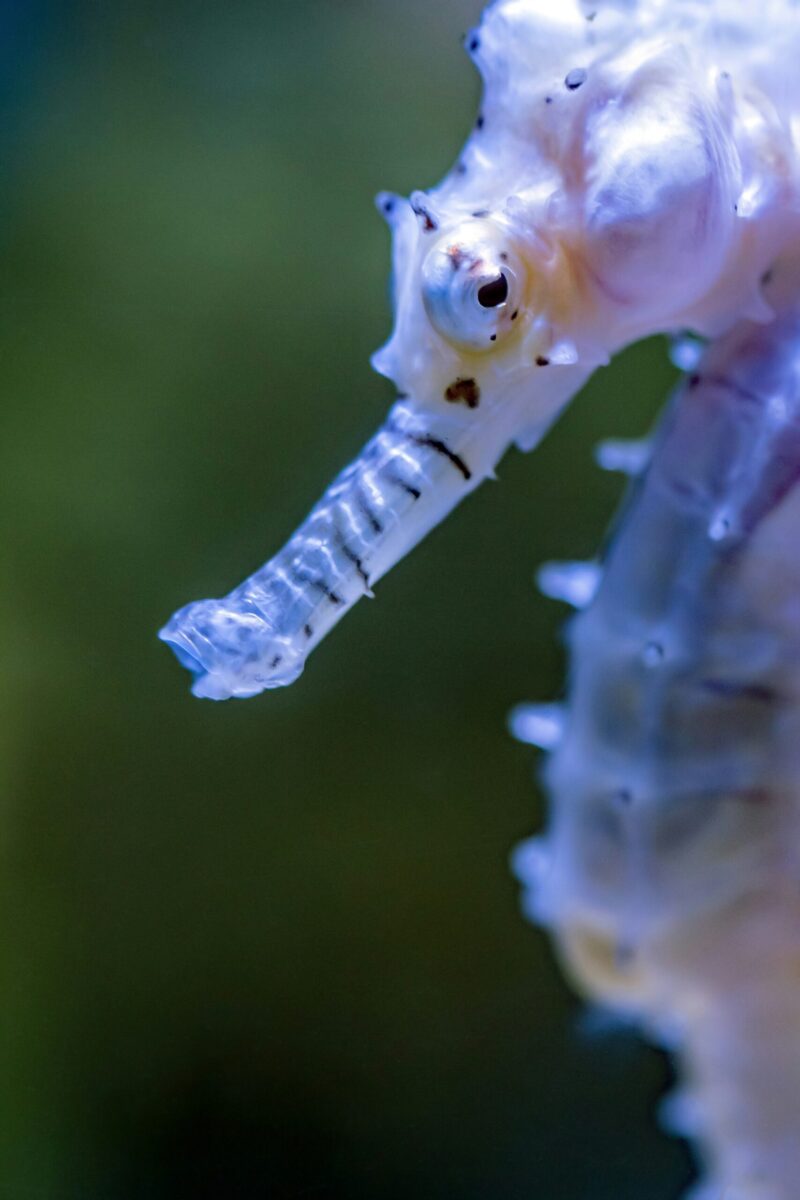
A vital dance
Seahorses have a special mating dance that may take up to nine hours. It includes spinning around, swimming side by side and changing colors.
Females and males swim together until their movements become synchronized. Only then, the female allows the male to approach her for mating. And you know what? She gives him the eggs, in the timespan of only six seconds. Seahorses and seadragons are the only species in the animal kingdom where it is the male that gets pregnant, carries the embryos and gives birth.
Most seahorses are monogamous and mate for life. And all species of seahorse mate with only one individual per breeding cycle. You can often see seahorses swimming in pairs with their tails linked together.
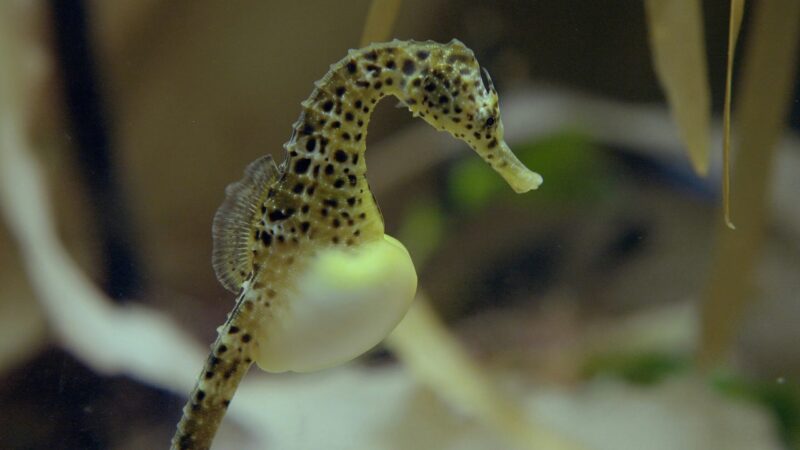
Labor time
It takes between 10 days to 6 weeks (depending on the species of seahorse) until the baby seahorses are born. The pouch works as a mammalian placenta. It provides a means to exchange oxygen, carbon dioxide and nutrients through blood flow to the growing seahorses.
When the time has come, the male seahorse finds a safe area to hide. Then, with cramp-like contractions, he presses up to 2,000 babies out of his brood pouch.
Some scientists think males carry the embryos so that females can be free to start making more eggs right after they deposit them in the males’ pouches. Since only 0.5% of baby seahorses survive until they become reproductive adults, time and quantity are crucial factors.
Once the male has finished the task of giving birth, the newborns have to get by on their own. Like their parents, they also go hide and try to eat microorganisms that pass by in the current.
Lifestyles of seahorses
Have you ever wondered how they stay still and how they sleep? After dusk, they look for a branch to cling to. They wrap their tails around a stalk to anchor to it to go to sleep seahorse style.

The grass not only offers protection and a nice bed but also provides the camouflage for hunting. The denser the vegetation, the more successful seahorses are at capturing their prey. This is of great importance, considering their need to eat nearly constantly.

Famous for their adaptation skills
Their skills for adaptation and survival are among the strangest in the animal kingdom. Being small, slow animals, they need a strong armor. And, in this case, it’s also flexible. Instead of scales, they have bony plates that move in perfect harmony. This means that – if a predator bites the animal – the armor deforms up to 50% without breaking or harming the vertebrae inside. This strength and flexibility provide incredible protection. Scientist can’t stop studying this interesting structure.
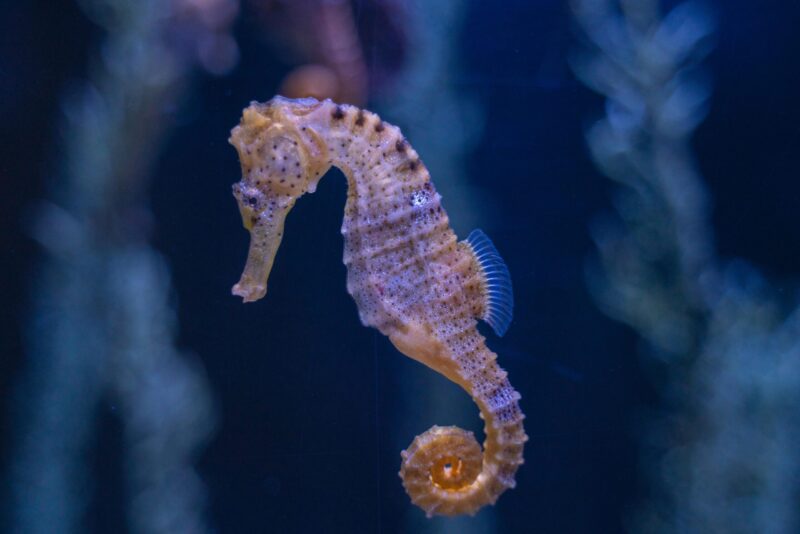
But a seahorses’ structure isn’t perfect. They’re terrible swimmers, and their upright position makes them slow. Also, they lack pelvic fins. Their movement is limited to a dorsal fin on their back that propels them forward and a pectoral fin on either side of their head that steers them where they want to go. This explains their sedentary lifestyle, clinging to seagrass or coral.
Colors and camouflaging
Like many other animals, seahorses have adapted to their environment. Having an upright position has two advantages in grassy environments: Swimming to the blades of grass is easier than swimming horizontally. And it’s easer to camouflage a vertical fish in vertical blades of grass and coral.
Many fish, including seahorses, have the ability to change color. It’s an adaptation to mimic their surroundings when hiding from predators or prey. They also use it to communicate during courtship displays and territorial disputes. They’re so talented that one species – Pygmy seahorses – was discovered by accident when one of their coral homes was brought into a lab in 1969.
Some species of seahorse can even grow filaments (called cirri) along their body to help them blend in with their surroundings.
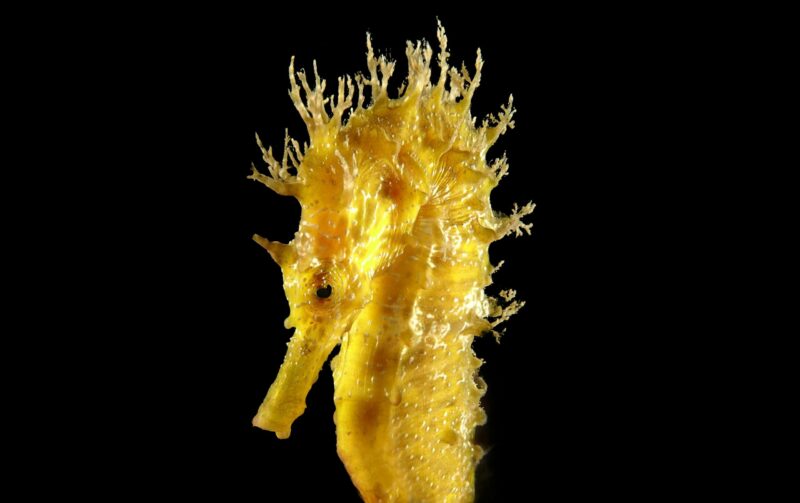
Seahorses change color in two ways: First, they have a base color that changes to reflect the color of the habitat they’re in. So, in seagrass surroundings they would be green; in a coral reef they would change to brighter hues. Seahorses that live near sand are often sand colored, with small black dots. The second color change is activated by emotion. During a courtship display, for example, seahorses can go from black to white. Emotion-led color change takes seconds, while base color change can take some time.
Brilliant animals
Did you know? Biofluorescence – the ability of organisms to absorb light and reflect it in a different wavelength – has been reported for many marine fish, including seahorses.
When they’re born, they show a green bioluminescent color only in the eyes. This extends to the rest of the body when they grow up. For example, when the species Hippocampus reidi becomes an adult, the Hippocampus shows green and red emission in the form of dots or stripes along its entire body. The green biofluorescence is most evident in the eyes and as small dots throughout the body, while the red color covers the entire head, snout and tail. This pattern is the same for every seahorse, but the intensity varies between them. There are individual differences with body lighting, color patterns and the age at which biofluorescence occurs.
Seahorses are in trouble
Unfortunately, there’s a human appetite for these mysterious animals. They are mostly used for traditional medicinal purposes in China, Japan and Korea, where they are believed to treat asthma, sexual dysfunctions or pain.

Fisheries all over the world supply this demand. Some seahorses are targeted directly while others are captured unintentionally (as bycatch). Millions of seahorses are traded by 77 countries, because they are also popular in aquariums and sold as souvenirs or pets.
Seahorses are threatened by more than just fishing. They commonly live in seagrass beds, mangroves and coral reefs in coastal shallow waters, all of which are highly sensitive to pollution, climate change and other human impacts.
Seahorses are especially vulnerable to disturbances. That’s because they’re slow swimmers, with sparse populations throughout the oceans. Plus as monogamous creatures, they remain faithful to their mate and are slow to find a new partner if one disappears.
Can you spot these masters of camouflaging?
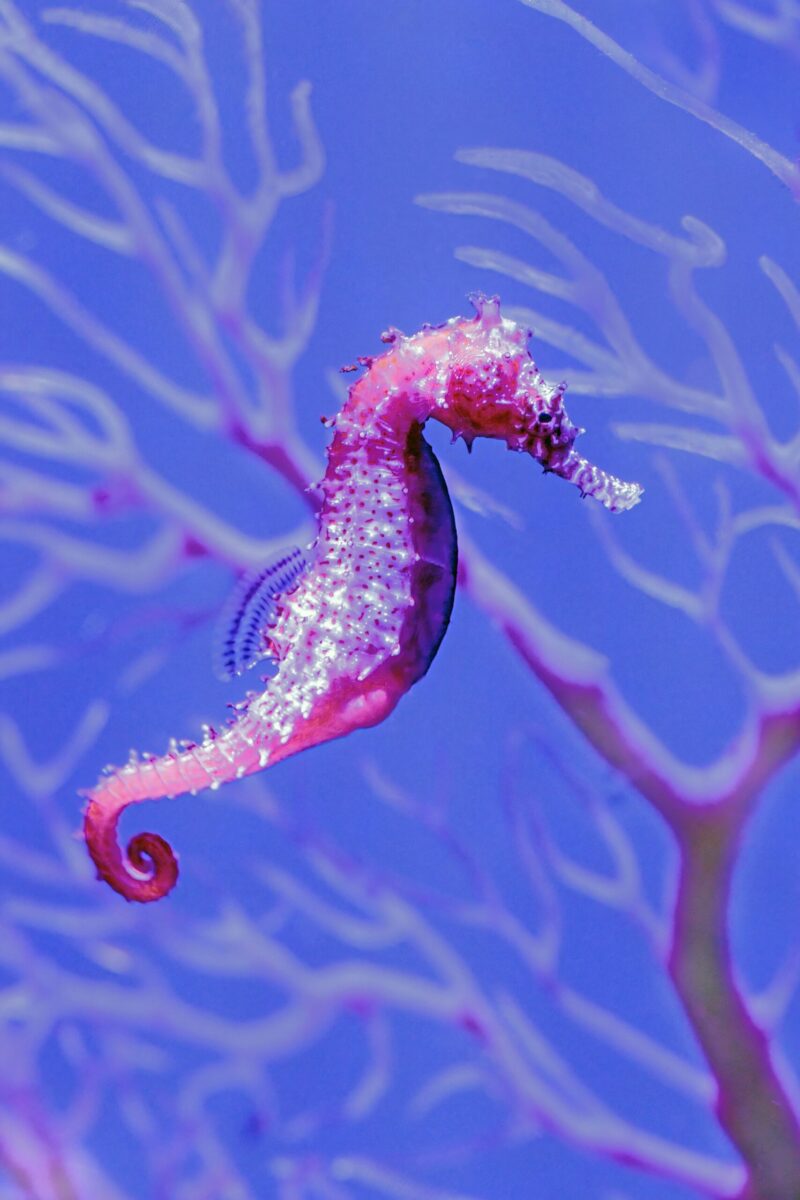

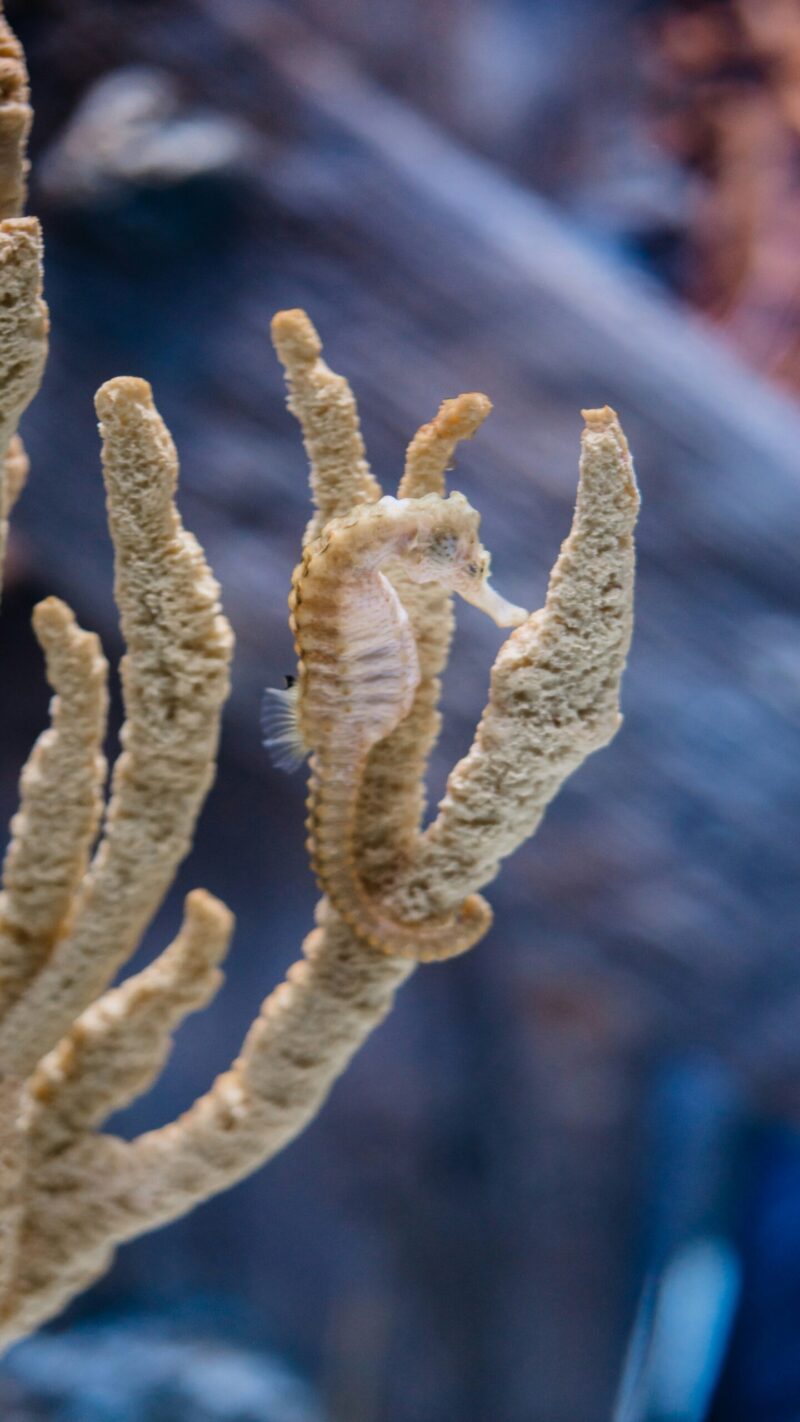
Where’s Waldo?
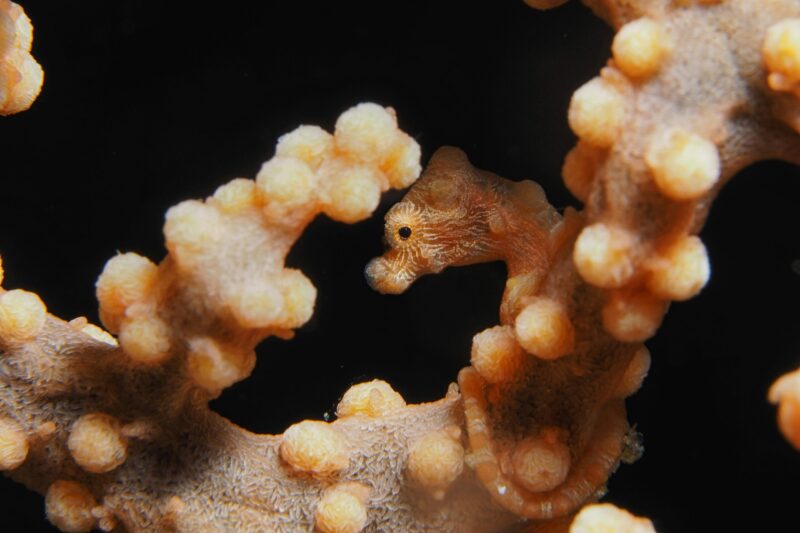


Bottom line: Seahorses look like a blend of several different animals. They have no stomachs so they need to eat almost constantly. Also, they can camouflage and change colors.











